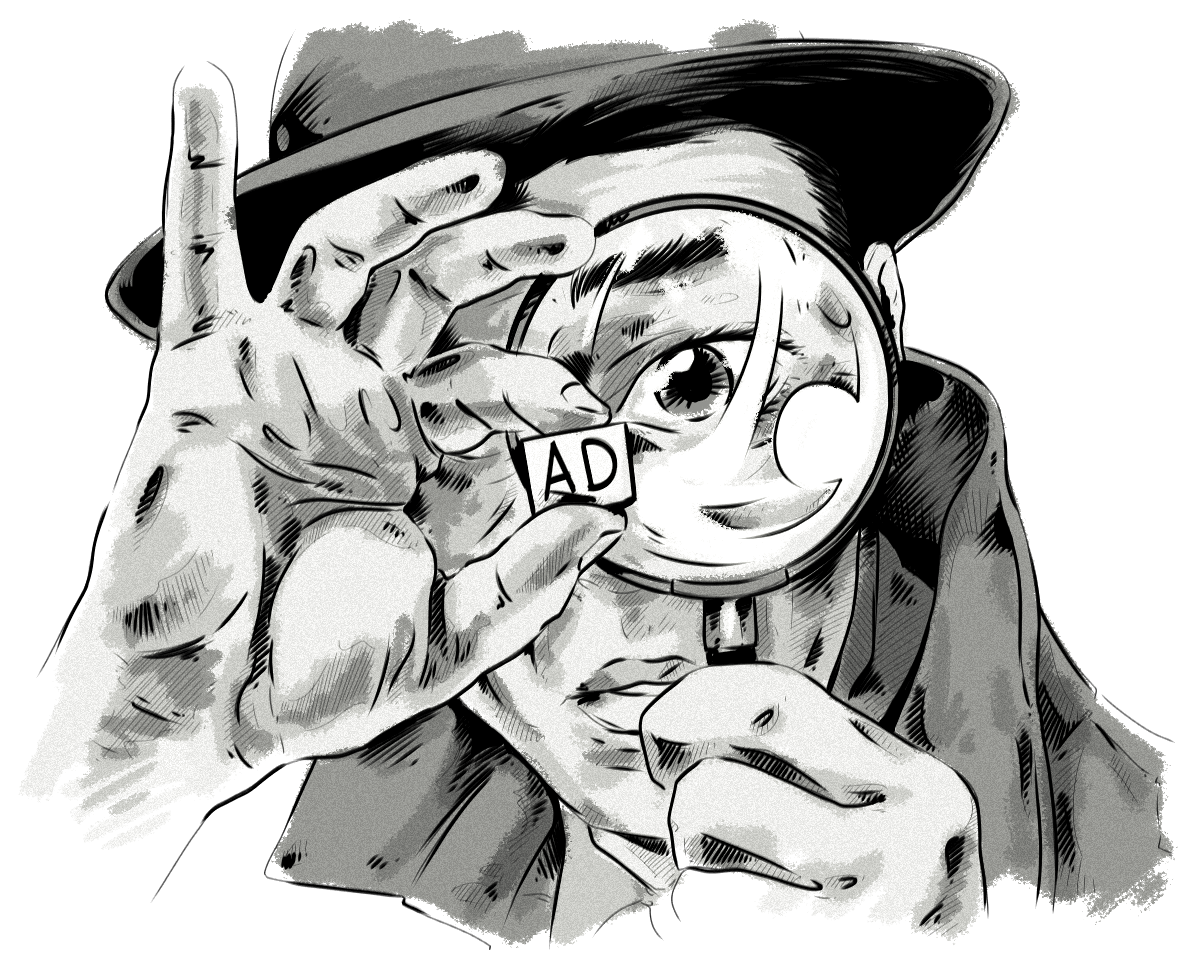In the age of ad fraud, an increasing amount of advertisers’ money is wasted on ad impressions that appear on fraudulent sites, don’t reach the desired audiences, or are not properly displayed in the user’s browser.
These issues effectively decrease the advertisers’ return on investment, and because an increasing number of ads are being displayed to Internet users each day and brands are pouring more and more money into online advertising, programmatic advertising is becoming a very lucrative target for the fraudsters.
Ad fraud is only one area eating away at advertising dollars, however. There are many variables at play when it comes to verifying whether an ad was seen by the intended user, such as ad placement and context.
Ad verification has emerged as a partial remedy to the problem and consists of spotting the areas that stop the ads from reaching the widest possible audience.
What is Ad Verification?
Ad verification is a process which allows advertisers to check if their ads are displayed in the right context, on the right websites, in the right area of a website, and seen by the right audiences. This area of digital-advertising technology is gaining traction; it may soon change how marketers buy media and how impressions are valued in the marketplace. This is evident with movements such as guaranteed viewability and the time-spent purchasing model.
AdTech & Programmatic Platform Development
We can help you design and build real-time bidding, and programmatic advertising platforms for all advertising channels — display and native, in-app mobile, video and audio, OTT and CTV, in-game and DOOH.
How Does Ad Verification Work?
Ad verification is typically used by advertisers to verify that the designated attributes of a served ad match their specified terms laid out in the ad campaign settings (e.g. site, geographical, or content parameters). To do this, verification tags, or beacons, are deployed along with the ad (inside the ad markup) to analyze the content of the publisher’s page and ensure the site is appropriate for the ad.
The ad-verification vendor then sends reports back to the advertiser or agency so they can analyze data about placement, performance, etc. Typically the agency/advertiser will have a separate login to the ad verification vendor, although some may be more seamlessly integrated, with a demand-side platform (DSP), for example. The whole point of ad verification is to have a third party that is impartial and can independently verify the delivery of the campaigns.
The goal of verification is not to prevent suspicious ads from showing altogether—especially since when the ad is displayed, the RTB auction has already happened—but it can help fend off the publishers with low viewability or high fraud traffic early in the campaign by excluding them (blacklisting) in the DSP.

Here is what’s happening in the image above:
- A user accesses a website containing an ad slot.
- An ad request is sent to multiple DSPs via supply-side platforms (SSPs), ad exchanges, and ad networks. In the case of a direct deal between the publisher and advertiser, the ad markup consisting of the creative, impression-tracking pixel, and ad-verification code would be configured directly in the publisher’s ad server.
- The winning ad (from the DSP that had the highest bid) is sent to the publisher via ad markup (creative, impression-tracking pixel, and ad-verification code).
- When the ad loads on the page, the ad-verification code collects data about the website and user.
- The ad-verification vendor then provides the advertiser with performance reports, including details about ad placement, audience, engagement, etc.
- Ad markup containing the ad-verification tag is returned to the browser by the supply-side platforms, ad exchanges, and ad networks, or configured directly in the publisher’s ad server if the media transaction is a direct deal between the advertiser and the publisher.
Why is Ad Verification Needed?
While ad verification is typically used by advertisers, it also benefits publishers.
For advertisers, it helps save their precious advertising budget and improve the efficiency of ad campaigns. It allows them to verify that the ads are displayed as contracted with the publisher. Ad verification also urges publishers to maintain transparent practices with regard to how they achieve and represent site traffic.
There are a number of factors that can not only affect the performance of an ad, but also impact the advertising brand’s image. As an example, if an ad was displayed next to inappropriate content (e.g. hate speech), then users may associate that brand with that content and may even get the false impression that the brand endorses the content.
For publishers, on the other hand, ad verification helps to minimize the risk of running fraudulent ads on their sites and have better control of the ads displayed on the site.
In the past, reviewing ads before publishing was the responsibility of the publishers’ ad ops, but as the number of network partners grew, the number of ads became unwieldy, making it difficult to consistently manage ad quality.
By implementing automated ad-verification technology, publishers can avoid displaying certain kinds of content on their sites, including:
- Malicious ads (auto-redirects, phishing, drive-by downloads, and malware integrated into the pre-click or post-click)
- Inappropriate ads (e.g. pornography)
- Ads for illegal products
- Badly targeted ads
Fake Traffic Detection
Today, even though a publisher may work with just a few intermediaries, they may actually connect to hundreds of demand partners through exchanges, making ad verification even more important. No method to detect fake traffic guarantees full success, but there are a few methods which vastly curtail the fraudulent practices.
Some publishers resort to elaborate methods to detect fraudulent bot traffic that may impact and misrepresent audiences in front of advertisers:
Bot traps: These are 1×1 pixel images on the page, or links that use the same color as the background. While they are invisible to the human eye, a bot might fall for them. However, because some bots are smart enough not to “click” the links in the same color of the background, it is recommended that the trap uses only a similar color (but not exactly the same).
Redirects using Javascript: Because many bots don’t understand Javascript, making a Javascript redirect will stop the bot from actually reaching the advertised offer.
Timed redirects: These are bot traps that automatically redirect users clicking an ad to the actual offer through a blank 200ms-redirection landing page. This pause (200 milliseconds) is way too small a time frame for a human to react and click anything, but the bot will automatically click a “trap” link placed there (bot traffic is typically “too fast to be true”).
Typically, we see implementations of combinations of the above methods.
What Areas Do Ad Verification Detect
As mentioned above, ad verification is focused on checking if the ads displayed on the website meet the criteria set out in the campaign settings. The most common areas checked by ad-verification tags include:
- Site context
- Ad placement
- Viewability
- Competitive separation (to ensure the ads are not displayed next to competitive brands)
- Fraudulent activity
- Frequency cap
- Geotargeting (IP-lookup)
It is possible to verify IP addresses and check if they have been infected, are proxies, or are simply data centers, for example, where no human traffic can be originating from. Below we go in more detail about why these particular areas are important for digital marketers.
Viewability
Viewability involves checking whether the ad was contained in the viewable space of the browser window based on pre-established criteria, such as the percent of ad pixels and length of time the ad is in the viewable space of the browser.
Now, with ad verification, advertisers have the ability to calculate reach based on actual views. This gives them information about which media buys and publishers perform best and offer the most value.
To track viewability, verification vendors use ad tags which can look outside of the iframe to assess where the ad is on the page and how long the user was active on the page. While this provides a point of reference, it is not a complete measurement because viewability can also be determined by measuring whether the intended audience viewed the ad impression.
Just because an ad doesn’t load “above the fold” doesn’t mean that it’s not a viewable impression. For example, if the content which the intended audience is interested in is at the bottom of a page, then it might be more impactful for your ad. This may be where the most relevant content is, and where the audience is spending more time.
Fraudulent Activity
Activity connected with fraudulent click traffic and ad impressions has been plaguing the industry for many years. It can take multiple forms:
Ad Fraud Technique #1: Invisible and hidden ads.
This type of attack makes the ad invisible on the website, even though the impression will be reported.
Ad Fraud Technique #2: Impression laundering.
This type of attack conceals the real website where the ad is displayed.
Ad Fraud Technique #3: Hijacking ads.
The so-called ad-replacement attack refers to the event in which the malware hijacks the ad slot on a website and displays an ad, generating revenue for the attacker rather than for the publisher (the owner of the website).
Ad Fraud Technique #4: Hijacking clicks.
Similar to hijacking ad placements, an attacker can hijack a user’s click. When the user clicks on an ad, the attacker redirects the user to a different site, essentially stealing a prospective client from the advertiser.
Ad Fraud Technique #5: Popunders.
Popunders are similar to pop-up windows, but the ad window appears behind the main web browser window, rather than in front. It can be combined with the impression-laundering technique to generate additional revenue.
Ad Fraud Technique #6: Bot traffic.
Publishers can use botnet traffic, which either consists of compromised users’ computers or a set of cloud servers and proxies in order to generate revenue by faking clicks and gaming attribution models.
Ad Fraud Technique #7: Fake users.
Just as in the case of desktop and laptop fraud, fraudsters also use mobile apps to imitate human-like activity. It typically involves a combination of methods like bots, malware, and click or app-install farms, all with the goal to build large audiences of fake users, and consequently feed on the online advertising ecosystem.
Ad Fraud Technique #8: Fake installs.
Install farms are another way to imitate human-like behavior. They install apps using real people as dedicated emulators. Like in the case of fraudulent ad clicks, fraudsters use teams of real people who install and interact with apps en masse.
Ad Fraud Technique #9: Attribution manipulation.
Bots are pieces of malicious code that run a program or perform an action. Bots aim to send clicks, installs, and in-app events for installs that never actually happened. Fraudulent clicks, for example, are sent to an attribution system, gaming attribution models and falsely taking credit for user in-app engagement. While they can be based on real phones, most of them are server-based.
Contextual Brand Safety
Contextual brand safety is making sure a brand’s ad doesn’t appear next to inappropriate content.
Keyword verification is used in specific campaigns to ensure ultimate brand safety based on the specific content or keywords found within the content of the pages where the impression is being served.
Using ad verification may be especially important for advertisers promoting pharmaceuticals and alcoholic beverages, as these categories of ads have many restrictions tied to them about where the ad can be featured. Failure to uphold this level of protection can result in costly fines for the brand.
Many ad-verification providers and some ad servers have already introduced more granular categories to help advertisers decide whether the ad should be displayed on the page. This can include categories, such as:
- Adult material
- Copyright-infringed content
- Weapons
- Violence
- Hate and profanity
By blocking an ad in these categories, brands are assured that their ads will not be displayed in undesired contexts.
The Main Ad-Verification Vendors
There are many different ad fraud companies on the market that detect certain types of ad fraud, like the ones listed above, for both advertisers and publishers.
Below are just some of the main ad fraud companies that you’ll likely come across:
- Adloox
- Integral Ad Science (IAS)
- Moat (acquired by Oracle)
- CHEQ
- DoubleVerify
- HUMAN
- Pixalate
- Confiant
- The Media Trust
- Fraudlogix
- Forensiq (now part of Impact)
- comScore
Which Brands and Advertisers Use Ad-Verification Technology?
Ad verification is not a temporary whim of advertisers. An increasing number of media and advertising companies implement ad-verification solutions.
GroupM, the world’s largest advertising media company in terms of billings (and parent company to WPP media agencies including Mindshare, MediaCom, Wavemaker, Essence, and m/SIX) already implements ad-verification tags. This is an effort to ensure better enforcement of compliance with ad specs with publishers.
A number of major networks and exchanges have also jumped on the ad-verification bandwagon. Networks like Visto (formerly Collective), Undertone, and Tremor Networks have all added verification analytics to their reporting to ensure better efficacy of the ads displayed within their networks.
On top of that come other AdTech vendors, including AudienceScience, Rubicon Project, Sizmek, that have partnered with some of the ad verification companies listed above.Google’s DoubleClick also provides advertisers with a unified platform which allows ad verification as an extension of their services.
Final Thoughts
Ad verification is part of a growing movement towards improved transparency in AdTech that’s being pushed forward by brands, publishers, and advertisers. We’ve already started to see progress in some areas, especially around fees and commission, so it won’t be long before brands and advertisers start asking for more clearer insights into where their ads are shown and to who.
AdTech & Programmatic Platform Development
We can help you design and build real-time bidding, and programmatic advertising platforms for all advertising channels — display and native, in-app mobile, video and audio, OTT and CTV, in-game and DOOH.







